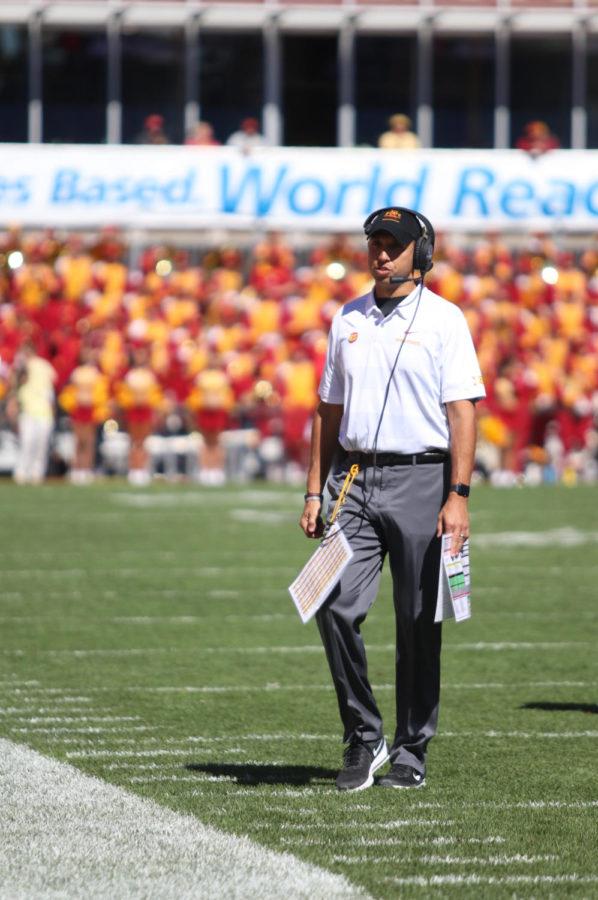Marner: College football transfer rule needs adjusting
September 26, 2018
One of the great new traditions in college football has just begun.
It started (at least around the Big 12) with Oklahoma State coach Mike Gundy’s announcement on Monday, when Gundy said Jalen McCleskey, a senior wide receiver for the Cowboys, would be transferring from the program.
McCleskey — one of the most accomplished receivers in Oklahoma State history — and his decision to leave signal the beginning of a new era of transfers.
Thanks to a new rule within college football, players can participate in up to four games in a season without it counting toward their eligibility.
That rule hasn’t affected Iowa State yet, but it could happen soon, just like it did in Stillwater.
That means McCleskey, who played in four games, can be a graduate transfer after this season and finish his college career at any school that will take him for the 2019 season.
At first glance, I liked the rule — now, it’s clear there’s still some work to be done.
I’m all for players having more control. I’m not going to argue in favor of paying student-athletes right now, but it’s clear student-athletes have little freedom once they sign their National Letter of Intent and step on campus.
I’m a big fan of giving more control to those student-athletes. This just isn’t the way to do it.
This isn’t meant as an attack on McCleskey. He’s free to get the most out of his career, and I’ll never fault an athlete for doing what’s best for themselves, especially in a sport like football with notoriously short career spans.
To his credit, Gundy didn’t attack the new rule. After all, it helps those teams just as much as it hurts them in the long run. For every Jalen McCleskey that leaves, a Kelly Bryant could transfer in.
My proposal for the new rule is simple.
Give student-athletes a choice after each year. They can either transfer — without penalty, without having to sit out a year — or they can return to their current school.
The idea of sitting out for a year after transferring is antiquated, anyway. Coaches don’t have to abide by that rule and neither do administrators. But that’s probably a topic for another day.
McCleskey’s situation is the worst-case scenario for a team. The Cowboys played him as a true freshman in 13 games, letting him return punts and throwing him the ball enough for him to catch 29 passes for three touchdowns.
He had 73 catches as a sophomore to lead the team. He scored five times as a junior and ripped off 109 yards against Iowa State.
Yet four games into his senior year, when his role would (seemingly) be the biggest of his college career, McCleskey left.
As far as coach Matt Campbell’s squad goes, those announcements, if there are any, could come after the Cyclones play at TCU this weekend. That’s game No. 4.
Perhaps TCU coach Gary Patterson summed it up best.
“I don’t think any coaches are going to be excited about the rule,” Patterson said on Monday. “I think the people that put the rule in place underestimated [the rule] … I think it’s gonna end up being like the NFL.
“Whoever did it [transferred] probably needed to leave anyway.”
Patterson may have underestimated the support for the rule from his fellow coaches, but he has a point. Teams are going to suffer from this rule change and there’s no reason players can’t be given the choice to transfer in May or June rather than September.







